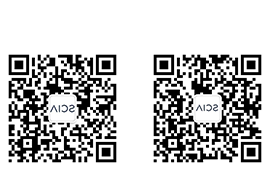
THE TRANSCRIPTIONS OF SINO-EUROPEAN DISPUTE RESOLUTION SEMINAR (I)
A NEW BRIDGE FOR SINO-EUROPEAN ARBITRATION COOPERATION:
THE TRANSCRIPTIONS OF SINO-EUROPEAN DISPUTE RESOLUTION SEMINAR (I)
1. Welcome Remarks by Dr. LIU Xiaochun, the President of SCIA
.jpg)
Good morning, honorable Swiss Deputy General Consul Schmid, honorable President Geisinger, honorable President Habegger, distinguished guests, ladies and gentlemen. On behalf of the council of Shenzhen Court of International Arbitration (hereinafter referred as “SCIA”), I have the great pleasure and privilege to welcome you all to participate in today's seminar, co-hosted by SCIA and ASA (the abbreviation of the Swiss Arbitration Association).
Today's seminar will focus on dispute resolution involving Chinese and European parties from the perspective of legal professionals and entrepreneurs. The speakers will discuss several important issues, including location.
Talking about the location, we know Switzerland is an arbitration hub at the heart of Europe, and Shenzhen is an arbitration hub at the heart of Asia-Pacific. As we can see from the map, Shenzhen is a gateway city to China.It is the nearest seaport for Europe, Middle East, Africa, Southeast Asia andthe Oceania, to mainland China. Meanwhile, almost half of the global population can fly to Shenzhen or its neighbor, Hong Kong, within five hours.
Because of the location advantage, Shenzhen became the first window of China’s market and the first Chinese Special Economic Zone in 1980. The Economists regarded Shenzhen as the most successful Special Economic Zone in the world, among 4,300 Special Economic Zones globally. Because of its location, Shenzhen has become the biggest city in mainland China in terms of export volume since 1993, and it is one of the hubs of mainland China for international investment inbound to China or outbound from China. It is also well known that Shenzhen is the most important hi-tech industrial city in mainland China, with many famous world-class companies such as Huawei, ZTE, and DJI, etc. Also because of the location and the fast-growing economy, Shenzhen is a hub for international arbitrationand China's pioneer for international arbitration since the establishment of SCIA in 1983 at Shenzhen.
SCIA is the first arbitration institution in mainland China to include foreign professionals on its panel of arbitrators since 1984, and it is also the first one in mainland China whose arbitral award was enforced outside the mainland China jurisdictions in 1989, according to the New York Convention.
SCIA became the first one in mainland China, in 2012, to establish a council-based corporate governance structure. According to a unique statutory body legislation, the Regulations on SCIA, at least one-third of the council members and at least one-third of the panel of arbitrators of SCIA must come from outside jurisdictions. It makes SCIA not only the most independent arbitration institution in mainland China in terms of governance structure, but also the most cosmopolitan arbitration institution in mainland China in terms of the panel of arbitrator origination.
Now we, SCIA, have 870 panel arbitrators, covering 50 countries, and 353 from outside jurisdictions, accounting for 40.6% of the total, including 103 from 19 European countries, and five from Switzerland. Since the establishment of SCIA in 1983, our arbitration parties originated from more than 60 countries, and our mediation parties originated from 111 countries. Just last year, an international dispute cameto SCIA and was settled by the means of Med-Arb within 13 days, only 13 days,with a disputing amount of RMB 13.4 billion, which set a new record in China's arbitration history.
Today in the seminar, we are pleased to see many in-house counsels and representatives from many Chinese companies, and also many from European companies. To satisfy the demand of the dispute resolution involving China parties and European parties, today, SCIA and ASA will sign a cooperation agreement, and SCIA and the SCAI will sign a memorandum of understanding for cooperation. I believe that the mutual cooperation between our two countries represents a new bridge and a natural step in enhancing both locations as the hubs of international arbitration involving parties from China, Switzerland, Europe and Asia.
Finally, I have to thank you all for coming. I have to thank the sponsors and supporters. I hope you enjoy today's event. Thank you.
2.Welcome Remarks by Mr Beat Schmid, the Deputy Consul General at Consulate General of Switzerland in Guangzhou
.jpg)
Dear President Liu Xiaochun, dear President Elliott Geisinger, distinguished guests, ladies and gentlemen:
Good morning!
I'm very pleased to be here today on behalf of the Consul General of Switzerland, and I would like to first of all thank the Swiss Arbitration Association and the South China International Economic and Trade Arbitration Commission for organizing the Sino-European Dispute Resolution Seminar today here in Shenzhen, the first of its kind in South China. Just a few words of introduction to start.
Switzerland was one of the first countries to recognize the People's Republic of China in January 1950, and since then the Sino-Swiss relations have been very good. This has greatly facilitated the political,economic and cultural contacts between the two countries. In fact, the Swiss company Schindler set up the first Sino-foreign joint venture in 1980. Over the last few years, the economic and trade relations between China and Switzerland has been developing at an extraordinarily fast pace and in a very positive way.
In 2007, Switzerland recognized China as a market economy and, as the first G20 country, signed a free trade agreement with China in 2013. This agreement entered into force on 1 July 2014. This further enhanced bilateral trade, which amounted to about US$20 billion last year.
China is now the largest trade partner for Switzerland in Asia, and the third worldwide after the European Union and the United States of America. Today, there are around 600 Swiss companies with about 1,000 branches operating in China, with an investment of approximately US$ 17 billion in 2013.Switzerland joined the Asian Infrastructure Investment Bank as one of the first countries in 2015.Both countries have now become important partners for each other, with multilevel cooperation in various fields.
Furthermore, the Chinese and Swiss economies are complementary in many ways and we can learn from each other, like organizing this seminar now, almost two years after the enforcement of the free trade agreement between Switzerland and China, and several high-level visits. One was the state visit of the Swiss president this year in April.
It is time to deepen the discussion about all aspects of international cooperation. Arbitration and dispute resolution is key in cross-border trade in business, and therefore signing a Sino-European arbitration cooperation agreement will further enhance the economic relations between China and Europe.
Now, I don't want to let you listen to more of my speech, so during this seminar, I'm sure you will get to know more about the way Switzerland is dealing with disputes and arbitration in an international environment, and I wish all of you good success, lots of discussion, and interesting inputs from all our speakers. Thank you very much.
Navigation
Arbitration Rules Model Arbitration Clauses Find an Arbitrator SCIA Guidelines Online Case Filing Online Office Fee Calculation X



